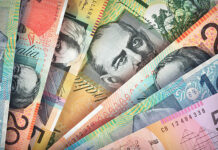Markets
Markets started the week in wait-and-see modus ahead of key upcoming events including the US mid-month refinancing, US (inflation) data and the start of the earnings season. A risk-off start in Asia had only a limited impact. US and European indices lost less than 0.5%, which isn’t that bad considering they are only a whisker away from cycle/all-time top levels. The first part of the US refinancing, including the sale of 3-y and 10-y bonds, went smoothly. Fed’s Bullard reiterated the Fed’s commitment to keep policy accommodative but put forward a 75% vaccination rate as a threshold to start the debate on tapering the Fed’s bond-buying program. US yields rose marginally (5-y yield +1.5 bp). The German curve steepened with the 30-y rising up to 2.0 bp. Still, the recent sideways consolidation pattern for the 10-y yield remains perfectly intact. The dollar showed no clear directional pattern. Last week’s decline halted, but it’s unclear whether this is a pause or the start of a potential ST reversal. The trade-weighted index finished at 92.13 (open 92.33). EUR/USD reversed an early, risk-off driven decline to close at 1.1911. Sterling slightly outperformed the euro with EUR/GBP closing at 0.8669 (0.8683 close on Friday).
Asian equities this morning mostly opened in positive territory, but the momentum is dwindling as the session develops. The China March trade surplus (in CNY) declined to CNY 88 bln as imports (27.7%) rose more than exports (20.7%). Month data are notoriously volatile, but high growth rates for both imports and exports might be a positive sign both for global growth and domestic demand in the country. The yuan eases slightly this morning (USD/CNY 6.5510), but this also mirrors a (modest) rise of the dollar, supported by higher US yields. EUR/USD is changing hands near 1.1890. USD/JPY trades at 109.70
Today’s German ZEW investor sentiment(expectations) is expected to improve further. In the US, NFIB small business confidence (expected to rebound from 95.8 to 98.5) is an interesting pointer on the broadness of the recovery. However, the focus is on US March inflation. The report should mark the long awaited start of a base effect-driven jump inflation. US headline inflation is expected to rise from 1.7% Y/Y tot 2.5% Y/Y. For core inflation a modest rise to 1.5% is expected. The market reaction might be a pointer on markets ‘believe in central bankers’ narrative that this inflation uptick is mainly temporary in nature. Later, the US Treasury will sell $ 24 bln in 30-y bonds. Recently, the rise in ultra-long US yields clearly took a pause. From a technical point of view, we look out whether today’s combined reaction to the 30-y auction and inflation data will revive the reflationary narrative and trigger a new rise of the US 10-y yield in the ST 1.58%/1.77 ST consolidation pattern. Inflation data/expectations often offer a mixed narrative for the dollar. The US currency lost momentum of late. EUR/USD 1.1950/1.1990 still remains a tough resistance. The recent EUR/GBP rebound also shows tentative signs of a pause with the 0.8731 correction top probably not that easy to regain. This morning’s UK production data came out on the stronger side of expectations.
News Headlines
The monthly US budget deficit spiked to $659.6bn last month, the third-highest on record following April (-$738bn) and June (-$864bn) last year. Spending increased to $927bn in March because of the third round of stimulus payments. The US budget deficit now totals a record $1.7tn in the first half of the fiscal year. The Congressional Budget Office projects the deficit to reach $2.3tn by the end of September with federal debt rising to a whopping 102% of GDP.
Sources indicate that US Treasury Secretary Yellen won’t name China as a currency manipulator in her inaugural semiannual FX report, to be published Thursday. Under US President Trump’s reign, China faced the accusations for a couple of months. Current criteria are a current account surplus with the US of 2% of GDP, a bilateral trade surplus of at least $20bn and FX interventions amounting to at least 2% of GDP. In December 2020, the US labeled Switzerland and Vietnam as FX manipulators with 10 more countries on the “monitoring list”. One of them, Taiwan, is rumored to be called manipulator as well. Such move is largely symbolic, though penalties could follow after being one year on the FX list.













